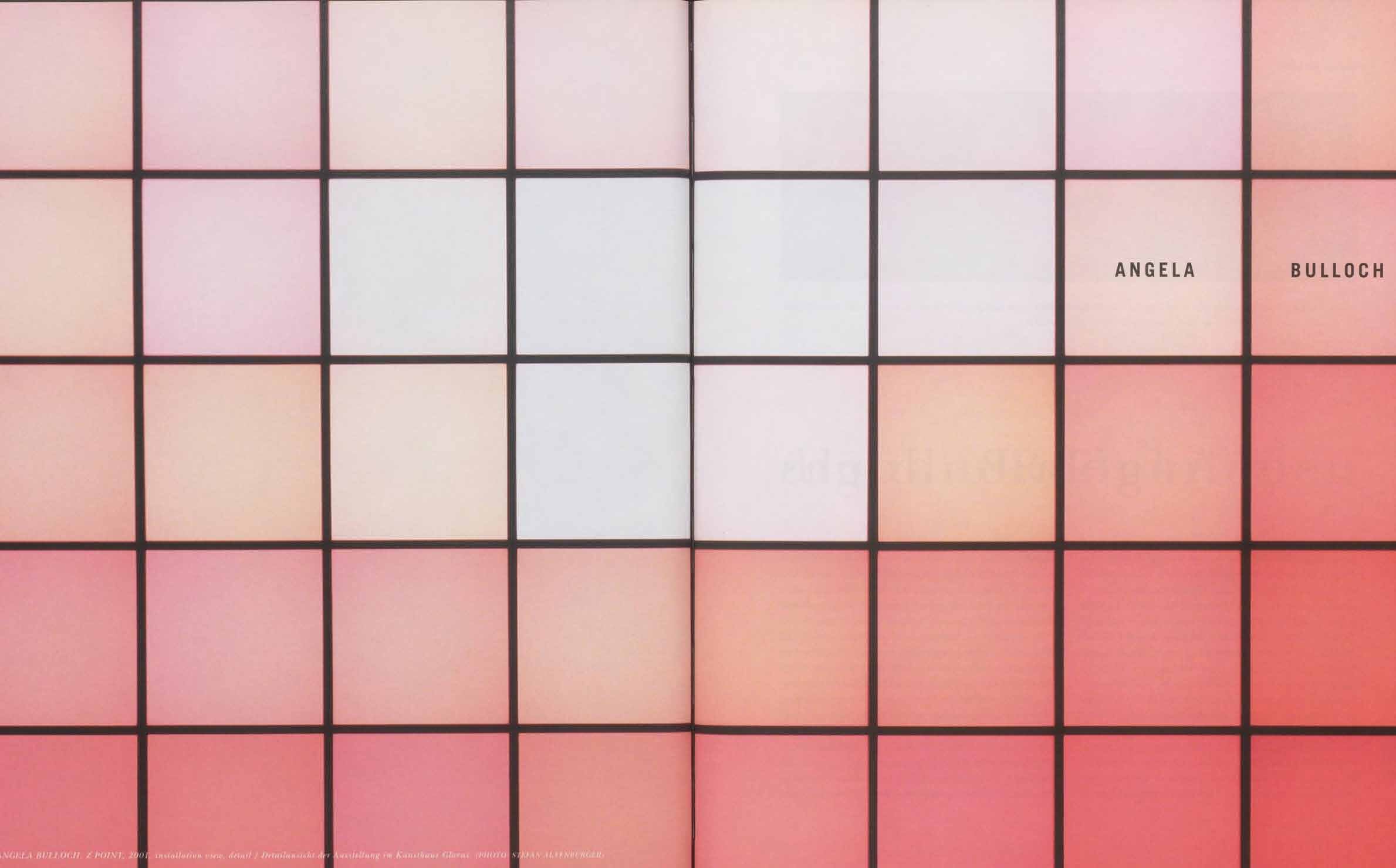Parkett Vol. 66 - 2002 | Angela Bulloch, Daniel Buren, Pierre Huyghe
Angela Bulloch
Read a selected text (PDF)
View edition
Daniel Buren
Read a selected text (PDF)
View edition
Pierre Huyghe
Read a selected text (PDF)
View edition
Insert Daniel Buren (PDF)
Spine: Nic Hess
Cumulus
Cumulus America (PDF)
Cumulus Europa (PDF)
Miscellaneous:
Monica Bonvicini by Roberto Ohrt (PDF)
U.S. & Canada
Please place your order through our distributor D.A.P. here.
Angela Bulloch
Read a selected text (PDF)
View edition
Daniel Buren
Read a selected text (PDF)
View edition
Pierre Huyghe
Read a selected text (PDF)
View edition
Insert Daniel Buren (PDF)
Spine: Nic Hess
Cumulus
Cumulus America (PDF)
Cumulus Europa (PDF)
Miscellaneous:
Monica Bonvicini by Roberto Ohrt (PDF)
U.S. & Canada
Please place your order through our distributor D.A.P. here.
Angela Bulloch
Read a selected text (PDF)
View edition
Daniel Buren
Read a selected text (PDF)
View edition
Pierre Huyghe
Read a selected text (PDF)
View edition
Insert Daniel Buren (PDF)
Spine: Nic Hess
Cumulus
Cumulus America (PDF)
Cumulus Europa (PDF)
Miscellaneous:
Monica Bonvicini by Roberto Ohrt (PDF)
U.S. & Canada
Please place your order through our distributor D.A.P. here.
Browse Selected Texts and more on the Collaboration Artists
View Artist Insert by Daniel Buren
Editorial
This volume of Parkett may be taken as an invitation to roam through space: Angela Bulloch, Daniel Buren and Pierre Huyghe probe unexplored potential in works of art that betoken acts of piercing, stretching and occupation. Even some of the pages themselves, with their unusual perforations, explicitly echo Buren’s most recent architectural interventions. Yet categories like painting, sculpture and architecture, or abstraction and fiction are losing their fixity, dissolving in ambiguities, overlappings and also displacement, as analyzed in the conversation between Daniel Buren and Pierre Huyghe.
In another conversation in this issue, Thyrza Nichols Goodeve and Giuliana Bruno, author of Atlas of Emotion, discuss the writer’s study of the relationship between affect and space, and escaping the strictures of “the optic paradigm of the gaze.” The rejection of singular and static viewpoints (Anne Rorimer) is also at the core of Daniel Buren’s art, with its visible goal of exposing the institutionality that marks the sites of his interventions. Buren has developed his work exclusively in situ since the late 1960s, a method that leads to subtle and at times sybaritic transformations of the sites at his disposal.
For his collaboration with Parkett, Buren took inspiration from our embroidered logo to design a special INSERT titled, “De la broderie à la dentelle,” and a laser-cut tablecloth for his “Edition for Parkett,” both using the standard 8.7 cm format of his stripes. The spatial effects and colors of his spectacular exhibition at the Centre Pompidou last summer address the “visual pleasure” of the “decorative as strategy” that Alison Gingeras defends in her essay; she describes Buren’s museum as a place where “playful speculation replaces the dogmatism of any linear or Cartesian logic.”
Rooms are, indeed, places in which untold points of view can be tested, sometimes reaching into terra incognita as in Pierre Huyghe’s poetic quest for “the invention of a no-knowledge zone” at the Kunsthaus Bregenz. The works consist of sound, light, steam, ice, cold, smells, literary and musical references, and processed quotations.
When the video of the collective Annlee project transmits the voice of Neil Armstrong after he set foot on the moon, the sound diagram of the astronaut’s voice forms the undulating range of mountains through which the cartoon figure seems to be walking, lost in thought.
The old, illusionist aspects of art have been blurred and transformed by fantastic set pieces of reality in Angela Bulloch’s oeuvre as well. In his essay “The Simulation of Simulation,” Martin Prinzhorn shows how, through inversion, source materials lead to interesting illusionist effects. Bulloch’s TECHNICOLOUR evokes the history of movies. Reduction and extension of meaning open out into illimitable realms that elude easy accessibility: in Bulloch’s pixel boxes, three rods of colored light are capable of generating no less than sixteen million colors.
Pierre Huyghe has created a windchime as his “Edition for Parkett ” that is not a readymade. Although a familiar tune, hidden away in the many accidental sequences of sound, may “ring a bell,” the work remains open to all other possible perceptions.
Table of Content
The Mobile Muse by Thyrza Nicholas Goodeve & Giuliana Bruno
Angela Bulloch
Angela Bulloch’s Digital Reductions by Juliane Rebentisch
Maybe by Andrew Wilson
The Simulation of Simulation (and vice versa) by Martin Prinzhorn
Daniel Buren
From Painting to Architecture by Anne Rorimer
Sumultanément, 2002, Photo Insert by Marin Kasimir
The Decorative Strategy in Daniel Buren’s Le Musée qui n’existait pas by Alison M. Gingeras
Conversation between Daniel Buren & Pierre Huyghe
Daniel Buren, DE LA BRODERIE À LA DENTELLE, travail in situ
Pierre Huyghe
Traveler’s Tales by Jeremy Millar
The Tale of the One Thousand Signs by Hans Ulrich Obrist
Pierre Huyghe’s Ellipses by Robert Hobbs
Fish Scales, Allan Sekula’s TSUKIJI by Edward Dimendberg
Tripe under Attack, Les Infos du Paradis by Roberto Ohrt
A Museum of Lies, Cumulus from America by Nato Thompson
Art, Science and the True Mistakes of Metaphor, Cumulus from Europe by Greg Hilty




